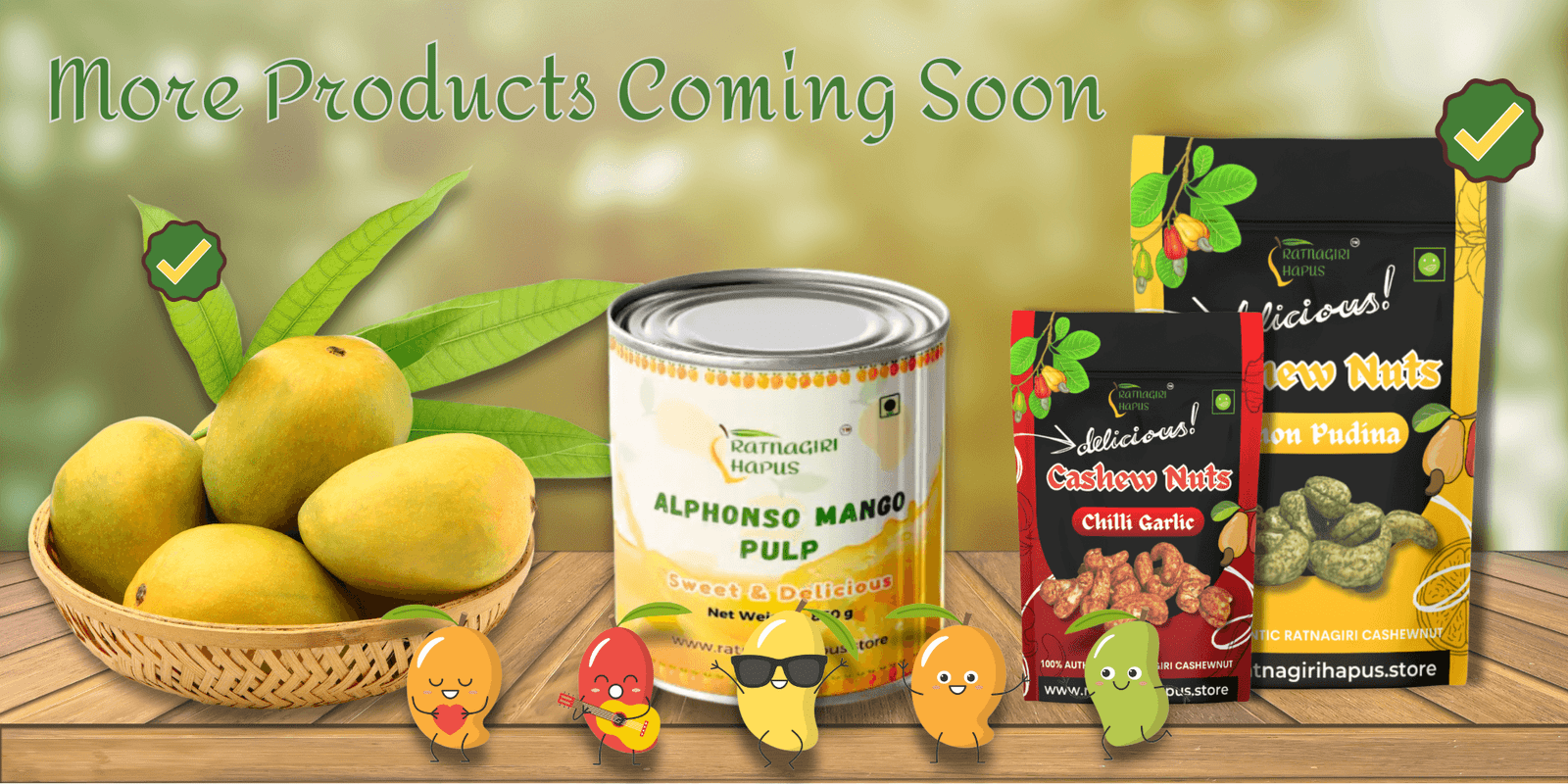
When we think of Ratnagiri, the first thing that comes to mind is its legendary Alphonso mangoes. We are expanding beyond this seasonal delicacy to offer innovative products like flavored cashews and Alphonso mango pulp. These new additions not only diversify the business but also ensure that the taste of Ratnagiri is available year-round.
Flavored Cashews: A Nutty Innovation
Cashews, already a favorite snack globally, are getting a delightful twist with local flavors. The Ratnagiri Hapus Store now offers a range of flavored cashews, including mango-flavored ones, as a tribute to the Alphonso mango. Other variations, like spiced and honey-roasted cashews, bring unique tastes to snack enthusiasts. These cashews are perfect for gifting, party snacks, or simply enjoying as a healthy indulgence.
What makes these flavored cashews special is the attention to quality. The nuts are sourced directly from trusted farmers, ensuring freshness and premium taste. The addition of natural flavors, including mango, provides a fusion of tradition and innovation.
Alphonso Mango Pulp: A Year-Round Treat
Mango lovers no longer need to wait for the summer season to relish the sweet taste of Alphonso mangoes. The introduction of Alphonso mango pulp by the Ratnagiri Hapus Store has made it possible to enjoy this flavor year-round. This pulp, made from handpicked and naturally ripened mangoes, is a versatile product. It can be used in desserts, milkshakes, ice creams, or even as a base for savory dishes.
What sets this pulp apart is its authenticity. Made without preservatives or artificial additives, it captures the real essence of Ratnagiri mangoes, ensuring that every spoonful is as rich and flavorful as the fruit itself.
Supporting Farmers and Expanding Opportunities
The introduction of these products also reflects the commitment of businesses like the Ratnagiri Hapus Store to empower local farmers. By sourcing raw materials directly from Ratnagiri’s orchards and processing them into premium products, the store ensures that farmers get a fair price for their produce. This initiative not only boosts the local economy but also elevates the global reputation of Ratnagiri’s agricultural offerings.
Convenience Meets Innovation
The Ratnagiri Hapus Store has made these products easily accessible through its online platform. Customers across India can now place orders on their website, ensuring that these unique products reach homes far and wide. With reliable delivery networks and easy online shopping, the store has redefined convenience for consumers.
A Taste of Ratnagiri in Every Bite
Flavored cashews and Alphonso mango pulp are more than just products; they are a way to keep the spirit of Ratnagiri alive throughout the year. Whether it’s the crunch of a mango-flavored cashew or the luscious sweetness of Alphonso pulp, these innovations have transformed seasonal delicacies into timeless treasures.
For those looking to savor the authentic flavors of Ratnagiri beyond the mango season, the Ratnagiri Hapus Store offers the perfect blend of tradition, quality, and innovation. Explore their range today and bring home a taste of Ratnagiri!

